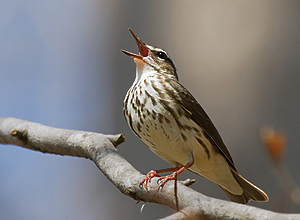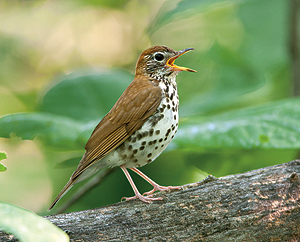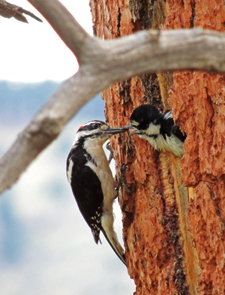Birds Indicate Health of Forest

Louisiana waterthrush (Parkesia motacilla)
Photo courtesy of Frode Jacobsen
The flute-like melody of the wood thrush (Hylocichla mustelina) is a piece of evidence that could help scientists determine the health of a forest.
Ornithologists often say one hears a wood thrush before they see the pot-bellied, reddish-brown forest bird. But any signs of this migratory bird or other forest interior dwelling species such as the hairy woodpecker (Pisoides villosus), red-eyed vireo (Vireo olivaceus) and Louisiana waterthrush (Parkesia motacilla) are indicators of a healthy forest because they depend on large expanses of forest for their habitats. A lack of these birds could indicate forest fragmentation, or the breaking up of large tracts of forest into smaller blocks by development, roads or agriculture.
Forest fragmentation reduces the biodiversity of habitats, reduces the forest’s ability to filter water leading to streams, makes it easier for invasive plant species to spread and causes other problems.

Wood thrush (Hylocichla mustelina)
Photo courtesy of Bill Leaman
This is why Western Pennsylvania Conservancy scientists are in the midst of a multiyear, comprehensive monitoring of the abundance and diversity of forest interior dwelling species – often called FIDS. David Yeany, a conservation planning specialist, and Ephraim Zimmerman, an ecological assessment manager, are leading the effort to collect baseline data at 25 monitoring sites across Pennsylvania, including more than a half dozen in the Northern Woods section of the state. They hope the information will help them assess the potential impacts of shale gas development across the Commonwealth.
Nearly all of Western Pennsylvania is underlain by Utica and Marcellus Shale formation, estimated to contain trillions of cubic feet of natural gas. In order to access the natural gas, companies often establish roads and build drill pads, fragmenting forests.

Hairy woodpecker (Picoides villosus)
Photo courtesy of Steve Frye
FIDS are especially sensitive to forest fragmentation, alteration and habitat loss. Therefore, the WPC team will monitor the Western Pennsylvania sites twice during the avian breeding season (May through July) in 2014 to look and listen for birds. They already monitored these habitats during the 2013 breeding season.
In addition to forest interior dwelling birds, they are also on the lookout for birds that prefer early successional, edge and other habitats. The diversity of species and the abundance of those species say a lot about an area. Yeany suspects areas that have more development will have fewer FIDS and more birds that prefer edge habitats, grasslands or early successional areas.
“Roads create an edge that can be about 300 meters deep. In this area, you will see increased nest predation, adverse weather and other conditions,” Yeany said. “Some species are sensitive to these issues and some adapt.”
Conservancy researchers hope the baseline data will help them in the future as they measure whether the Commonwealth’s landscape has been impacted by natural gas development.
